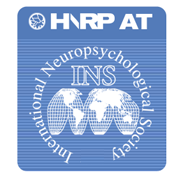Featured Publications
Featured Publications
Neuropsychological Performance in Mainland China: The Effect of Urban/Rural Residence and Self-Reported Daily Aacademic Skill Use.
Age, education, and gender are the most common covariates used to define normative standards against which neuropsychological (NP) performance is interpreted, but influences of other demographic factors have begun to be appreciated. In developing nations, urban versus rural residence may differentially affect numerous factors that could influence cognitive test performances, including quality of both formal and informal educational experiences and employment opportunities.
HIV and Chronic Methamphetamine Dependence Affect Cerebral Blood Flow
Human immunodeficiency virus (HIV) and methamphetamine (METH) dependence are independently associated with neuronal dysfunction. The coupling between cerebral blood flow (CBF) and neuronal activity is the basis of many task-based functional neuroimaging techniques. We examined the interaction between HIV infection and a previous history of METH dependence on CBF within the lenticular nuclei (LN).
A Neuropsychological Investigation of Multitasking in HIV Infection: Implications for Everyday Functioning
Improving Cultural Validity of Neuropsychology Instruments – The Beck Depression Inventory and Spanish Speakers of the US-Mexico Border Region
The Beck Depression Inventory-I (BDI-I) is a self-report measure of depressive symptomatology that is widely used in both research and clinical settings. While the Spanish language version of the BDI-I is frequently used in the USA, there are currently no available guidelines to determine depressive symptomatology base rates in Spanish speaking populations using this instrument. In the present study, base rates of depressive symptoms and demographic influences on the BDI-I were measured in a non-clinical Spanish speaking population from the US-Mexico border region.
Does Self Report of Pain Predict HIV-Associated Peripheral Neuropathy?
Sensory neuropathy (HIV-SN) is a common cause of pain in HIV-infected people. Establishing a diagnosis of HIV-SN is important, especially when contemplating opioid use in high-risk populations. However physical findings of HIV-SN may be subtle, and sensitive diagnostic tools require specialized expertise. We investigated the association between self-report of distal neuropathic pain and/or paresthesias (DNPP) and objective signs of HIV-SN. Data were obtained from the Central Nervous System HIV Antiretroviral Therapy Effects Research (CHARTER) study.
HIV and Neurosyphilis
Since 2000 the rates of primary and secondary syphilis infection in the US have been steadily increasing; if syphilis goes untreated the tertiary stage of infection can lead to central nervous system damage, resulting in neurosyphilis. Syphilis and HIV infection co-occur frequently. Neurosyphilis may increase HIV replication in the brain and spinal cord, possibly through immune activation that persists even after syphilis treatment.
For related article click here.
HIV and Mental Rotation Tasks
Performance on some mental rotation tasks (the ability to manipulate three-dimensional objects in space) is negatively impacted by HIV infection. Worse performance on mental rotation tasks is also associated with worse performance on measures of executive function and working memory. These findings suggest that HIV infection may disrupt the fronto-striato-parietal network within the brain.
For related article click here.











